Morel MW144 is looking good for a closed box, but since most of us are not listening in a van or similar room a bass reflex might be a better idea.
Woo blasphemy 🙂
I think you will have a lot of audiophiles spitting out their tea reading that comment. There's many who truly believe anything other than sealed is nothing but a glorified fart box. I myself like both but I can see the sealed argument. Even most of the highest priced high end subwoofers, the likes of Velodyne DD+, JL audio Phantoms Gotham will not employ a port and this is where it would have most effect if anywhere. And you can't argue with a design that's been around 50 years strong like the LS3/5A and is still pretty much the reference / standard for midrange. And most of us don't listen in vans either. I think most LS owners could get something much more for their money with multiple ports but I don't think its why they buy these types of speakers.
Spoke to Falcon again today. Had some ideas on tweeters through searching the net and reading opinions but was put right by Falcon again to which I really should be looking at. The tweeters everyone raves about like the Seas H1212 (metal dome) and another I wanted for another speaker Vifa D27 or Seas 27TDFC H1189-0 (fabrics) he said there are slightly better go to's of all of them.
He knew nothing about the SPH130 no experience, but I told him about the 135TC being good and he said yes he knows what works well. I said what about the 135AD then, they just said the TC was a better driver. That's about all I could get out of him don't think he was interested in too much conversation there today 🙂 I wanted to ask more but he politely excused himself then I went online and ordered some of his tweeters 🙂 Looking forward to trying the SPH130 anyway.
Morel MW144 is looking good for a closed box
It does look like a great driver BTW, thanks for the suggestion.
In " An introduction to loudspeaker and enclosure design " Vivian Capel describes how the compression caused by bass frequencies inside the enclosure causes distortion at higher frequencies ( an effect that goes largely ignored in tweeters despite their tiny, tiny air space behind the dome ), surly the resonances caused by the port would have worse effects, and that's before you include the sound escaping through the port, usually in the mid range. If you're put off by a port, you could go a step further and use a double chamber divided by an aperiodic vent; if you have the divider diagonal it could help reduce standing waves, or have two boxes with a cork gasket between to deaden the enclosure. The only way I'd countenance a port would be to go the whole hog and use a 2 1/2 inch woven glass fibre full range in a double chamber triple ported job, but then I'm an amateur who uses a lot of guesswork, other peoples views count
more than mine.
more than mine.
Lol I dont find it trivial the amount of bass boom and room modes you lose, when adopting closed box design rather than a similarly sized rear ported design.
 but opinions are just that, opinions.
but opinions are just that, opinions.
I find reflex cabinets in the range 4 to 7 litres, are very hard to tame, with respect to their resonances and the ease with which they can be damped - not enough volume to damp the resonances which fall in a 'inconvenient' spectrum, for midrange clarity and Low midrange 'spacial' cues.
The single best attribute of closed box designs of this range of volumes, is that you can damp those resonances, by box stuffing. (Which is the single worst thing you can do to a reflex, but is what the midrange needs, in volumes like that)
For what it's worth, my home speakers are taperedQW, of about 40L volume, using Visaton AL130. This midwoofer is absolutely awesome, just limited to 2kHz, so a good performing tweeter is needed. Bedroom system is 4" founteks, closed box.
Coincidentally....viewing the linked Hifi site:
The Visaton AL130 and G20SC might make a reasonable "nothing like the LS3/5A, but a bit similar" homage, and it should fit into a 5L volume and perform probably slightly better (the same as the fountek woofer I am using, which has an F3 of 75Hz, in 4 Litres)
 but opinions are just that, opinions.
but opinions are just that, opinions. I find reflex cabinets in the range 4 to 7 litres, are very hard to tame, with respect to their resonances and the ease with which they can be damped - not enough volume to damp the resonances which fall in a 'inconvenient' spectrum, for midrange clarity and Low midrange 'spacial' cues.
The single best attribute of closed box designs of this range of volumes, is that you can damp those resonances, by box stuffing. (Which is the single worst thing you can do to a reflex, but is what the midrange needs, in volumes like that)
For what it's worth, my home speakers are taperedQW, of about 40L volume, using Visaton AL130. This midwoofer is absolutely awesome, just limited to 2kHz, so a good performing tweeter is needed. Bedroom system is 4" founteks, closed box.
Coincidentally....viewing the linked Hifi site:
The Visaton AL130 and G20SC might make a reasonable "nothing like the LS3/5A, but a bit similar" homage, and it should fit into a 5L volume and perform probably slightly better (the same as the fountek woofer I am using, which has an F3 of 75Hz, in 4 Litres)
Last edited:
I used Mark Audio Pluvia 7.2HD in a 3/5a sized sealed box, no tweeter, and it sounded good to me. Don’t have access to genuine 3/5a so can’t compare. Speaker mounted in narrow side, not as originals.
I don't think your Homage to the LS3/5A hits the spot at all, xrk971. Sorry. 😀
What it did well was flat power response in the midrange, even if slightly inaccurate on frequency response.
I think I must be the only person here who understands the difference between power response and frequency response. TBH, I'd do it MTM if I spent time on it. Just better. I could go into how BW3 fills the LR2 and LR4 power hole at crossover if you are interested.
You don't want flat power response, read Olive/Toole.
Your 'thinking' is also flawed in the last para were you evaluate your own capabilities.
Any keen hobbyist can build a 5" polycone plus 3/4" or 1" tweeter and it will sound good enough, one of the easier speakers in the repertoire:
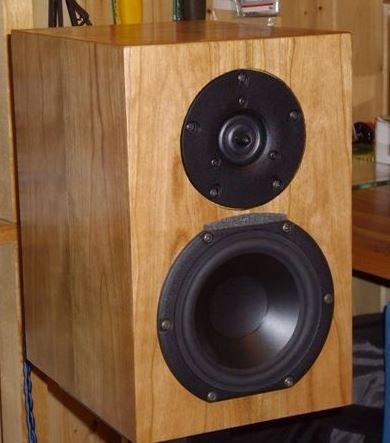
Peerless HDS PPB 830860
But is it a BBC LS3/5A clone? Absolutely not.
This is a better effort:
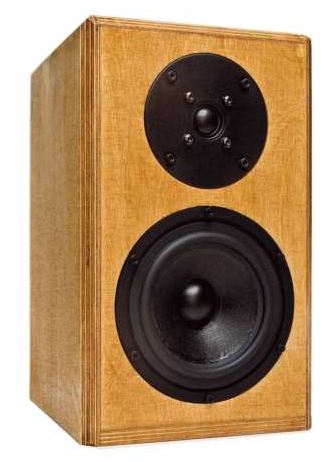
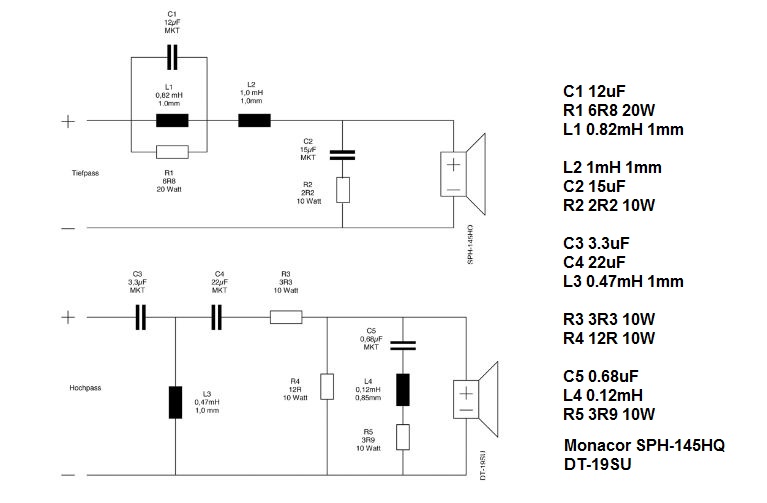
Monacor LS 5/19
3/4" mylar tweeter. Quite decent tweeters IMO.
5" paper cone, but very well behaved.
Positive polarity third order filter.
Very BBC crossover.
Maybe a weakness on diffraction control and grille cloth which is part of the design.
There were two ideas with KEF's constructor kits. If you recess the bass and use negative polarity, you get the CS1A. The CS1 was positive polarity and not recessed.
https://us.kef.com/pub/media/pdf/CS1A.pdf
Now KEF had an absolute Bee in their Bonnet about exact 18dB/octave BW3 slopes. This is actually called Acoustic Butterworth. Flatter power response than LR4.
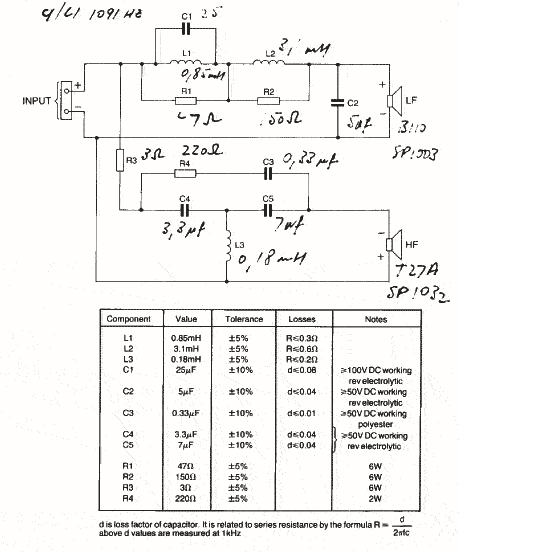
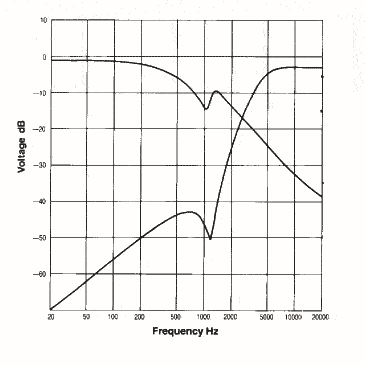
I am not giving you are hard time here, but for the BBC sound, it's BW3. Anything else is NOT LS3/5A.
Peerless HDS PPB 830860
But is it a BBC LS3/5A clone? Absolutely not.
This is a better effort:
Monacor LS 5/19
3/4" mylar tweeter. Quite decent tweeters IMO.
5" paper cone, but very well behaved.
Positive polarity third order filter.
Very BBC crossover.
Maybe a weakness on diffraction control and grille cloth which is part of the design.
There were two ideas with KEF's constructor kits. If you recess the bass and use negative polarity, you get the CS1A. The CS1 was positive polarity and not recessed.
https://us.kef.com/pub/media/pdf/CS1A.pdf
Now KEF had an absolute Bee in their Bonnet about exact 18dB/octave BW3 slopes. This is actually called Acoustic Butterworth. Flatter power response than LR4.
I am not giving you are hard time here, but for the BBC sound, it's BW3. Anything else is NOT LS3/5A.
Some great points here all.
Great post
And damn, I wish I had know about that SPH-145HQ before I'd ordered my SPH-130 🙁
I can feel another project coming on 🙂
Lol I dont find it trivial the amount of bass boom and room modes you lose, when adopting closed box design rather than a similarly sized rear ported design.
but opinions are just that, opinions.
I find reflex cabinets in the range 4 to 7 litres, are very hard to tame, with respect to their resonances and the ease with which they can be damped - not enough volume to damp the resonances which fall in a 'inconvenient' spectrum, for midrange clarity and Low midrange 'spacial' cues.
The single best attribute of closed box designs of this range of volumes, is that you can damp those resonances, by box stuffing. (Which is the single worst thing you can do to a reflex, but is what the midrange needs, in volumes like that)
For what it's worth, my home speakers are taperedQW, of about 40L volume, using Visaton AL130. This midwoofer is absolutely awesome, just limited to 2kHz, so a good performing tweeter is needed. Bedroom system is 4" founteks, closed box.
Coincidentally....viewing the linked Hifi site:
The Visaton AL130 and G20SC might make a reasonable "nothing like the LS3/5A, but a bit similar" homage, and it should fit into a 5L volume and perform probably slightly better (the same as the fountek woofer I am using, which has an F3 of 75Hz, in 4 Litres)
Great post
Any keen hobbyist can build a 5" polycone plus 3/4" or 1" tweeter and it will sound good enough, one of the easier speakers in the repertoire:
Peerless HDS PPB 830860
But is it a BBC LS3/5A clone? Absolutely not.
This is a better effort:
Monacor LS 5/19
3/4" mylar tweeter. Quite decent tweeters IMO.
5" paper cone, but very well behaved.
Positive polarity third order filter.
Very BBC crossover.
Maybe a weakness on diffraction control and grille cloth which is part of the design.
There were two ideas with KEF's constructor kits. If you recess the bass and use negative polarity, you get the CS1A. The CS1 was positive polarity and not recessed.
https://us.kef.com/pub/media/pdf/CS1A.pdf
Now KEF had an absolute Bee in their Bonnet about exact 18dB/octave BW3 slopes. This is actually called Acoustic Butterworth. Flatter power response than LR4.
I am not giving you are hard time here, but for the BBC sound, it's BW3. Anything else is NOT LS3/5A.
And damn, I wish I had know about that SPH-145HQ before I'd ordered my SPH-130 🙁
I can feel another project coming on 🙂
Before you make a homage to the Ls3/5a, surly you should think about WHY you want to. There are three things different about it, it has four bits of felt around the tweeter, it has a crossover that reduces the mid and treble to give the impression of bass, and it has a dead cabinet. If you ask for three examples of speakers with good mid range, you'll get electrostatic ( no box for the mid range ) Eclipse td " egg " ( driver coupled to a weight, isolated from the enclosure ) and BBC LS3/5A - dead cabinet. There are two speaker manufactures with ex bbc engineers that I know of, Harbeth - who use a screwed on front,( ie dead cabinet ) and Spendor, who use thin walled enclosures with lots of damping ( dead cabinet ).
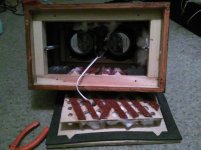
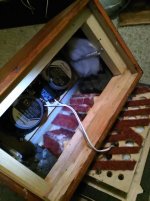
Here's my go, front held on by tension springs ( the grill cloth is glued on preventing the use of screws ) the back is held on by screws against a foam gasket ( cork is probably better ). The red stuff is carpet tile. Two duel cone polypropylene drivers wired in series, with a 1uf cap across the bottom one to take some treble away from that an give it to the top one to reduce " beaming " ( 1 uf probably not enough ). The drivers aren't the best choice but they have a lovely clear mid. I did think about adding a choke and resistor to give more bass, but the drivers probably wouldn't like that, and they're pleasant to listen to as they are. I'll use them for TV.
I used Mark Audio Pluvia 7.2HD in a 3/5a sized sealed box, no tweeter, and it sounded good to me. Don’t have access to genuine 3/5a so can’t compare. Speaker mounted in narrow side, not as originals.
1. This is multi way forum
2. I have heard a few MA and other full range drivers (I have a few)
None of them sound better than a good, equivalent, multi way system. Nice as they are, they only work if you listen to solo performers.
Before you make a homage to the Ls3/5a, surly you should think about WHY you want to. There are three things different about it, it has four bits of felt around the tweeter, it has a crossover that reduces the mid and treble to give the impression of bass, and it has a dead cabinet. If you ask for three examples of speakers with good mid range, you'll get electrostatic ( no box for the mid range ) Eclipse td " egg " ( driver coupled to a weight, isolated from the enclosure ) and BBC LS3/5A - dead cabinet. There are two speaker manufactures with ex bbc engineers that I know of, Harbeth - who use a screwed on front,( ie dead cabinet ) and Spendor, who use thin walled enclosures with lots of damping ( dead cabinet ).
Why.
Because there was/is something about the LS3/5A that has stood the test of time. It hit a sweet spot in design like it or not. Sealed has its disadvantages so does ported all speakers are compromises in one form or other. But to be around 50 years and still be considered to be a reference its doing something right. And the combination of design build and drivers (which I believe other drivers are equally as good with other modern variants by the way as modern drivers are just as good/better than whats in the originals if anything the b110 is a flawed, limited and fragile driver).
Hype and ridiculous prices aside they do still sound phenomenal with vocals and I think they do a great job with treble as well plus the trick they do with the very little bass they have is great in making the music enjoyable as a whole also.
Its a combination of the sealed design Id say, with it being damped inside and perhaps even the tiny cabinet helps, but its as good as anything any price for the way it presents vocals.
When talking about the LS3/5a there's bound to be a crossover.......
Sorry.
A DSP is a crossover just an active one so I can't see how a LS3/5A can't be replicated by using modern technology and an active crossover that can model what the original speaker was doing. Perhaps even improving it to where you like it more.
Last edited:
I apologise, as my previous statement was misleading, I don't want to dissuade anyone form replicating the LS3/5a, quite the opposite; please use your expertise to do so and post your results here so people like me can benefit. I was just trying to get over how important I believe the cabinet design is to it's sound. A violin is a wooden box vibrated by strings a similar weight to a bass cone, and yet it's loud enough to fill an auditorium. Admittedly, if it had a magnet between the body and the strings instead of a bridge it wouldn't be as loud, but it's still something to consider. I made a speaker with enclosure but totally different drivers,( but similar enclosure ) and yet it sounds just like the LS3/5a is described. Unfortunately I haven't heard an original, of have access to decent measuring equipment, so I'm on here to learn from people who have.
Hi Westsounds,
Just my 2c, I also did my own version of ls3/5a, but not a clone. It was very satisfying project with superb sound, just by following good advice/descriptions from the BBC papers about design you should be able to make your own design based on modern components.
Do not be discouraged if it is not 100% same as original, it might never be, unless you use exact same drivers, but you my be able to improve about everything else along the way with modern tools.
This is the link of my project:
Introduction to designing crossovers without measurement
Just my 2c, I also did my own version of ls3/5a, but not a clone. It was very satisfying project with superb sound, just by following good advice/descriptions from the BBC papers about design you should be able to make your own design based on modern components.
Do not be discouraged if it is not 100% same as original, it might never be, unless you use exact same drivers, but you my be able to improve about everything else along the way with modern tools.
This is the link of my project:
Introduction to designing crossovers without measurement
Hi Westsounds,
Just my 2c, I also did my own version of ls3/5a, but not a clone. It was very satisfying project with superb sound, just by following good advice/descriptions from the BBC papers about design you should be able to make your own design based on modern components.
Do not be discouraged if it is not 100% same as original, it might never be, unless you use exact same drivers, but you my be able to improve about everything else along the way with modern tools.
This is the link of my project:
Introduction to designing crossovers without measurement
Those speakers look absolutely fantastic Tubemax! They have to be one of the finest LS3/5A type of speakers builds I have seen! I'd say they were more Harbeth PS3ESR style than original BBC but that's not a bad thing, they were meant to be an evolution of it after all.
Personally however I never fell in love with the Harbeth variant like I did the originals. Not that this has any reflection on your speakers in the slightest of course I've not heard them I'm sure they are fantastic. I always wanted to love the Harbeths because even though the sound never really did a lot for me I did think they looked gorgeous.
Your advanced crossover knowledge and experimentation is way beyond what I think I am capable of without some serious learning/studying and I think I would rather just take the easy option of DSP to get there quick.
The other thing is you mounted the driver behind the baffle in true LS3/Harbeth style. I did initially go down that route but I thought to myself I don't really know why I am doing this other than to copy tradition/cosmetics. Also modern variants don't really do it anymore and there's the time aligning element which I have no idea of how to correct especially with a passive crossover, so I just moved it to the front. I've read some stuff online but I'm still not 100% certain why they rear mount, I have to say though it does look kind of cool.
I bet your speakers sound great and tuned to your liking. You should be and I expect you are really proud of those.
I like your choice of drivers as well, they certainly look the part plus they are great value for money. I have just used drivers that have been recommended to me. Ive tried to work out myself and had some ideas but when I've talked to others they seem to have put me right and I've gone for other units.
What a great speaker you have built though, would love to hear them. Be nice to put them next to BBC ones as well.
Last edited:
Nice build Tubemax! I also see you used the Dayton RST28 - but the aluminum cone variant. I used the fabric dome and it sounds great.
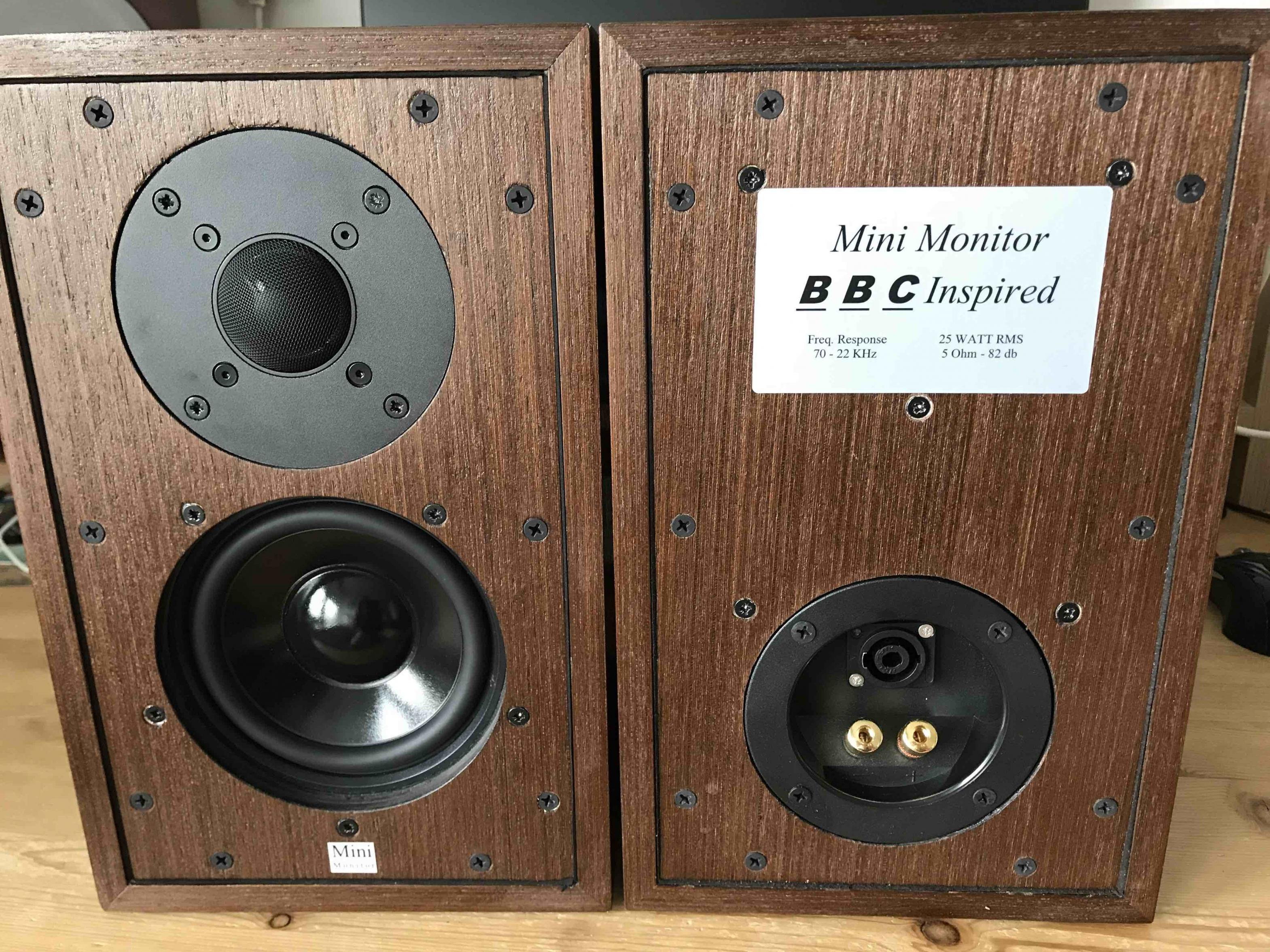
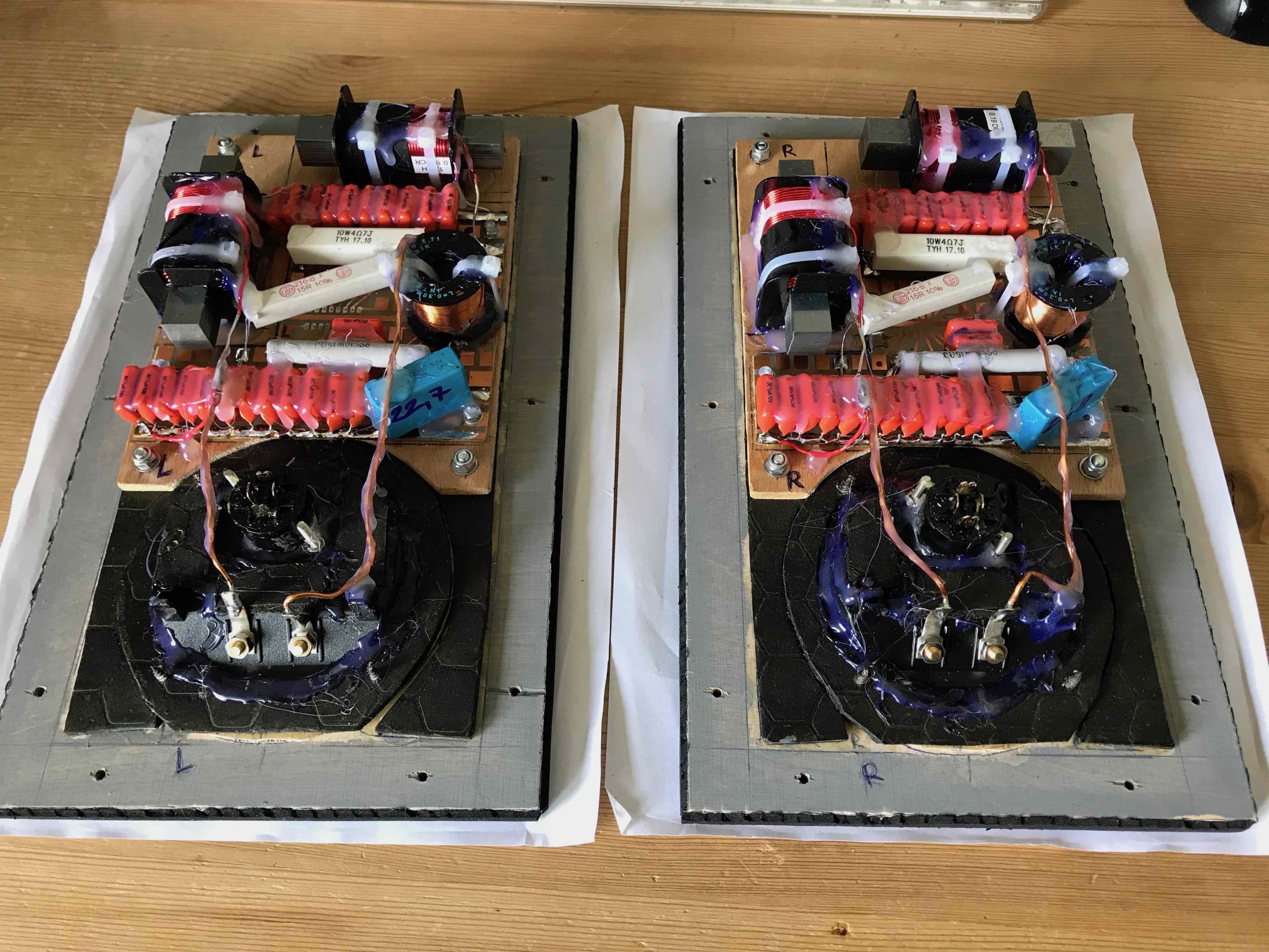
Superb implementation. Congrats!

Superb implementation. Congrats!

Hi westsounds & xrk971,
Thanks for kind words! It was my first complete speaker build/design as I wanted to have one small and great sounding mini.
Initially I wanted it to be active, with separate high/low amps and active crossover ( for that reason Speakon connector on the back ) but soon I realized it will not be versatile enough if I could not connect it to different amps and try to find a good match.
So went ahead and dive in to the many links by DIYAudio about crossover design and decided to do whatever it takes to learn/accomplish this task. I'm not new to electronics so it felt like a good chance to learn something new... also, decided not to ask anybody for advice and decided all by myself on drivers choice purely based on driver parameters and price.
Now, back to the Harbeth, I had 2 x ls3/5a before in the past and listened as well to the original P3es ( older model ) an must say it does not sound like ls3/5a, it's different thing, a bit too smooth/polite but very fancy looking design.
Driver mounting from behind has crucial influence on final result as much as thin wall enclosure with bitumen pads & front/back baffle suspended with screws... they all bring that organic sound back to the life and diminish unsympathetic enclosure resonances to the bare minimum.
Same speaker in the MDF was sounding boring just like many other commercial products, more reflections inside the box, more pronounced lower mid and blurry stereo picture.
Far cry from fully damped thin wall enclosure recommended by BBC designers in the past...
Oh and just to clarify - I'm not an "advanced crossover designer" at all, just decided to grab the bull by the horns and see what happens... 🙂
Thanks for kind words! It was my first complete speaker build/design as I wanted to have one small and great sounding mini.
Initially I wanted it to be active, with separate high/low amps and active crossover ( for that reason Speakon connector on the back ) but soon I realized it will not be versatile enough if I could not connect it to different amps and try to find a good match.
So went ahead and dive in to the many links by DIYAudio about crossover design and decided to do whatever it takes to learn/accomplish this task. I'm not new to electronics so it felt like a good chance to learn something new... also, decided not to ask anybody for advice and decided all by myself on drivers choice purely based on driver parameters and price.
Now, back to the Harbeth, I had 2 x ls3/5a before in the past and listened as well to the original P3es ( older model ) an must say it does not sound like ls3/5a, it's different thing, a bit too smooth/polite but very fancy looking design.
Driver mounting from behind has crucial influence on final result as much as thin wall enclosure with bitumen pads & front/back baffle suspended with screws... they all bring that organic sound back to the life and diminish unsympathetic enclosure resonances to the bare minimum.
Same speaker in the MDF was sounding boring just like many other commercial products, more reflections inside the box, more pronounced lower mid and blurry stereo picture.
Far cry from fully damped thin wall enclosure recommended by BBC designers in the past...
Oh and just to clarify - I'm not an "advanced crossover designer" at all, just decided to grab the bull by the horns and see what happens... 🙂
Tubemax,
I just noticed that the Visaton woofer is also a treated paper cone (sort of like the DC130A I used). So two independent attempts to make a small "BBC style" monitor ended up with a RST28 for the tweeter and a 5.25in treated paper cone for the woofer.
https://www.parts-express.com/pedocs/specs/292-564--visaton-w130s-8-spec-sheet.pdf
Nice crossover - pretty simple too.
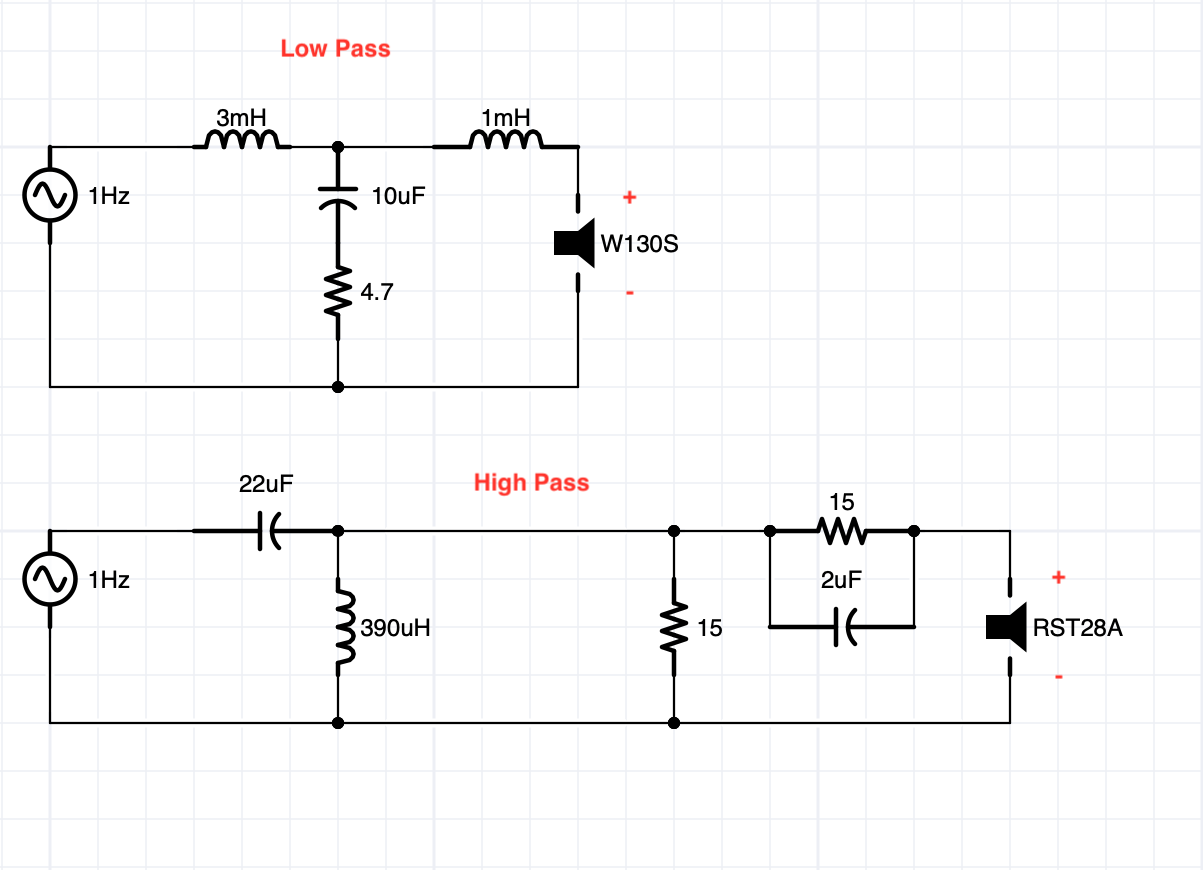
I just noticed that the Visaton woofer is also a treated paper cone (sort of like the DC130A I used). So two independent attempts to make a small "BBC style" monitor ended up with a RST28 for the tweeter and a 5.25in treated paper cone for the woofer.
https://www.parts-express.com/pedocs/specs/292-564--visaton-w130s-8-spec-sheet.pdf
Nice crossover - pretty simple too.
xrk971, I am impressed with your effort!

Warning. Overly large Image.
Not a million miles away from the BBC LS3/5A and it's Harbeth clones:
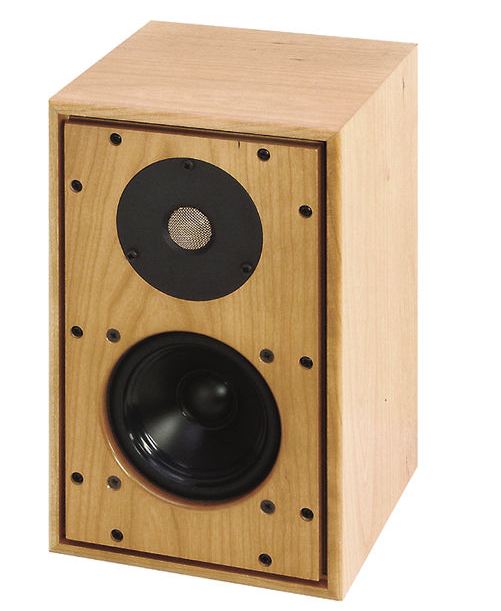
https://us.kef.com/pub/media/pdf/CS1A.pdf
I have heard these things. No bass whatsoever, but great on voices. A Radio 4 speaker here in the UK. The voice channel. 🙂
Warning. Overly large Image.
Not a million miles away from the BBC LS3/5A and it's Harbeth clones:
https://us.kef.com/pub/media/pdf/CS1A.pdf
I have heard these things. No bass whatsoever, but great on voices. A Radio 4 speaker here in the UK. The voice channel. 🙂
Last edited:
- Home
- Loudspeakers
- Multi-Way
- What's the best 5 inch driver for a small sealed box same as the LS3/5A. SPH-135TC ?